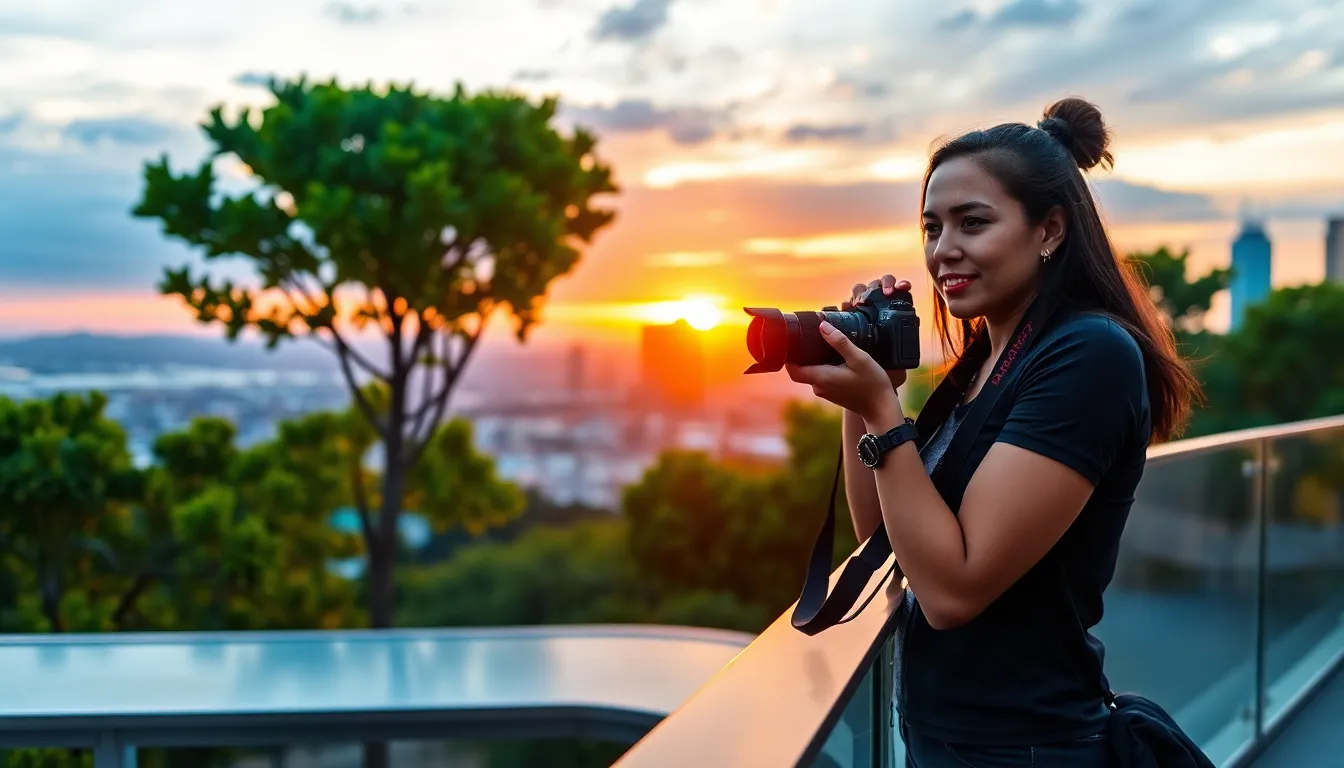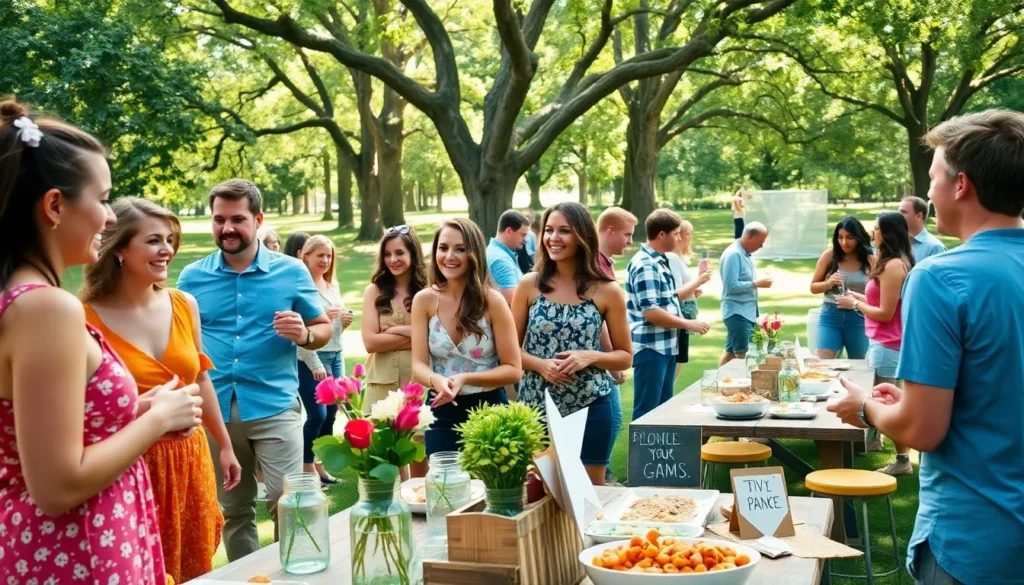Travel photography isn’t just about stunning landscapes or iconic monuments. It’s about telling a story that leaves friends and followers yearning for more adventures. Hold on to your cameras, because you’re about to discover the secrets that transform ordinary travel shots into jaw-dropping masterpieces. Light is your best friend, composition can make or break a photo, and a little post-processing magic can elevate your game. And don’t worry, if your friends begin to call you the “Photographer of the Century,” just smile and remind them that everyone can capture the world, they just need the right tips.
Table of Contents
ToggleUnderstanding Light and Its Impact

Best Times to Shoot: Golden Hour and Blue Hour
Every travel photographer knows the golden hour is a special time. It’s that magical hour after sunrise and before sunset when the light transforms into a beautiful, warm hue. During this time, shadows soften, and colors pop. Then, there’s the blue hour, a photographer’s dream that appears just after sunset and before dawn. The sky takes on a beautiful deep blue, offering a dramatic backdrop for urban scenes or landscapes. If she plans her shoots around these times, the results can dazzle.
Utilizing Natural Light for Creative Effects
Natural light isn’t just for illumination: it can add depth and emotion to a photograph. Backlighting, for instance, can create silhouettes that tell powerful stories. A subject bathed in the glow of the sun can evoke feelings of warmth or nostalgia. Experimenting with different angles can also lead to unique interpretations of a scene. Embracing shadows and highlights adds drama, making simple moments resonate more deeply.
Composing Captivating Images
The Rule of Thirds and Beyond
Anyone can place a subject in the center of the frame, but that often leads to mundane results. Instead, consider the rule of thirds. Imagine your frame divided into nine equal parts by two horizontal and two vertical lines. Placing points of interest along these lines or at their intersections can make a photograph more dynamic. Of course, rules can be bent. Sometimes breaking conventions yields the most memorable images, so encourage creativity.
Leading Lines and Framing Techniques
Leading lines are a visual technique that guides the viewer’s eye through an image. Roads, rivers, or even architectural elements can act as natural leading lines, revealing depth and inviting exploration of the photograph. Framing is another powerful tool. Using elements in the foreground to frame your subject can create a sense of intimacy and focus. These techniques can dramatically enhance the narrative of a travel image.
Capturing Local Culture and Landscapes
Tips for Architectural and Street Photography
Travel photography is incomplete without exploring local culture through architecture and street scenes. For architectural shots, it’s essential to capture the structure’s essence while considering angles and reflections. During travels, unique elements of street life can tell stories that resonate with viewers. Candid shots of local life or bustling markets can elicit emotion. The key is to blend in and observe, allowing moments to unfold naturally.
Engaging with Locals and Documenting Their Stories
Connecting with locals can enrich any travel photography session. Not only can they provide insights into the culture, but they can also generate stunning, candid moments. Approach them with respect and curiosity. Asking questions or sharing a quick conversation often leads to genuine expressions and stories worth capturing. Letting them know their stories matter can create a bond that translates visually in photos.
Essential Gear for Travelers
Choosing the Right Camera and Lenses
When it comes to travel, packing the right gear is crucial. DSLR cameras are versatile and great for quality images, but lighter options like mirrorless cameras can be more convenient. Lenses should be selected based on the type of photography desired: a wide-angle lens is perfect for landscapes, while a zoom lens is ideal for capturing distant subjects. Whatever gear is chosen, comfort and portability should always be kept in mind.
Accessories to Enhance Your Photography
Even the best gear can be enhanced with the right accessories. Using a sturdy tripod helps capture stable images during low light conditions. Filters can also create fantastic effects, polarizing filters reduce glare, while ND filters allow for longer exposure times. Don’t forget spare batteries and memory cards. Running out of power or storage on the go can kill the moment.
Post-Processing: Making Your Photos Shine
Basic Editing Techniques for Stunning Results
Once the travels are over and the photos are downloaded, a little post-processing can work wonders. Simple adjustments in exposure, contrast, and saturation can elevate an image’s impact. Cropping can also enhance focus, removing distractions and honing in on the subject. This doesn’t have to be an exhaustive process, sometimes, less is more.
Using Presets and Filters for Consistent Style
Many photographers use presets and filters to achieve a consistent look across their portfolio. This tool not only saves time but also allows for a cohesive aesthetic. Popular editing software offers various presets catering to different moods or styles. It’s fun to experiment, but ensuring the final product still looks natural is essential, like a perfectly cooked soufflé, it should look good without appearing overly manipulated.





